

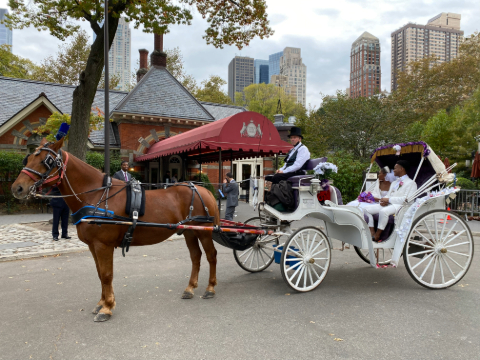
![]()
Tavern on the Green is a historic and iconic restaurant located in Central Park, New York City. Originally built in the late 19th century as a sheepfold, it was later transformed into a restaurant in 1934 and has since become a renowned dining destination. Nestled within the park's lush landscape, Tavern on the Green offers a unique blend of upscale dining and scenic surroundings.
The restaurant features an enchanting interior adorned with crystal chandeliers, antique furnishings, and large windows that provide panoramic views of Central Park. During warmer months, the outdoor garden area offers al fresco dining, adding to the charm of the dining experience.
Known for its American cuisine with a touch of sophistication, Tavern on the Green has been a favorite among locals and tourists alike. The menu showcases a diverse selection of dishes made with locally sourced and seasonal ingredients. Whether for a romantic dinner, a celebratory event, or a leisurely brunch, Tavern on the Green provides a memorable culinary experience in a setting that seamlessly combines elegance with the natural beauty of Central Park.
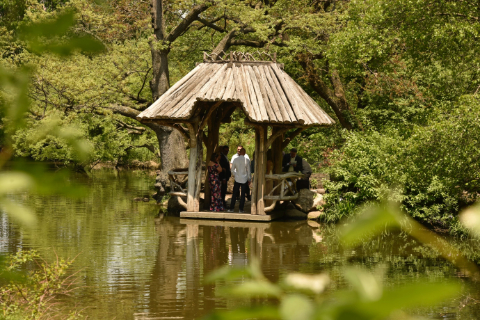
![]()
Wagner Cove in Central Park is a picturesque and secluded spot, offering a tranquil retreat amidst the bustling urban landscape of New York City. Nestled along the edge of The Lake in the park's southwest corner, Wagner Cove provides a peaceful respite with its charming rustic pavilion and surrounding natural beauty.
The cove is characterized by a wooden shelter with a thatched roof, providing a sense of intimacy and seclusion. Overlooking the serene waters of The Lake, Wagner Cove has become a popular destination for quiet moments, small gatherings, and even intimate weddings. The surrounding greenery and the soothing sounds of nature enhance the idyllic ambiance, creating a romantic and peaceful atmosphere.
Accessible by boat or by following the winding pathways through the park, Wagner Cove invites visitors to unwind and enjoy a moment of serenity away from the city's hustle and bustle. Its understated beauty and tranquil setting make it a hidden gem within Central Park, attracting those seeking a peaceful escape within the heart of Manhattan.
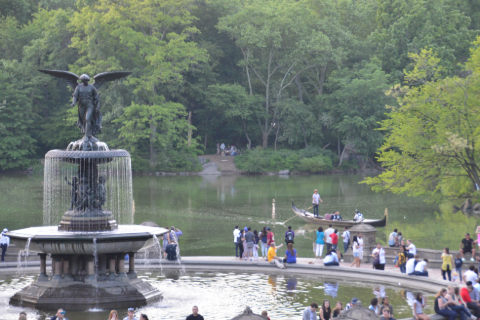
![]()
Bethesda Terrace Fountain is a magnificent and iconic feature located in Central Park, New York City. Situated at the heart of Bethesda Terrace, this grand fountain is a central focal point within the park. The terrace and its fountain were designed in the 1860s by architects Frederick Law Olmsted and Calvert Vaux as part of their vision for Central Park.
The Bethesda Terrace Fountain is characterized by its neoclassical design, featuring a large circular pool with a central sculptural element crowned by the "Angel of the Waters" statue. Created by sculptor Emma Stebbins, the angel symbolizes purity and blesses the water below. The fountain is not only a visually striking piece of art but also serves as a gathering place and a popular spot for park visitors to relax and enjoy the surroundings.
The terrace and its fountain overlook the lower level of the park, providing a breathtaking view of the adjacent Bethesda Terrace Arcade, the Central Park Lake, and the wooded landscapes beyond. The Bethesda Terrace Fountain, with its architectural and sculptural significance, contributes to the timeless charm of Central Park, offering a serene and picturesque destination for both locals and tourists alike.
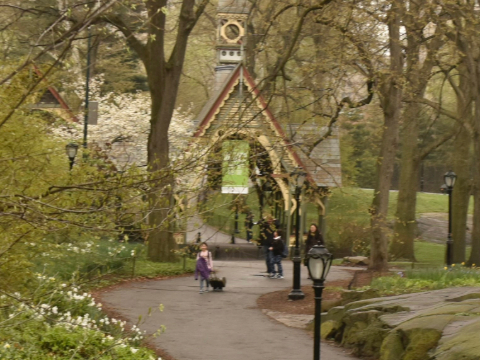
![]()
The Dairy in Central Park is a charming and historic structure nestled within the park's landscape. Originally designed as a milk and snack bar in the late 19th century, it now serves as a visitor center. The building's picturesque architecture, adorned with whimsical details like turrets and decorative tiles, adds to its allure. Surrounded by lush greenery, The Dairy provides a welcoming oasis for park visitors seeking information, refreshments, and a serene escape in the heart of Central Park. The serene ambiance and informative resources make The Dairy a delightful stop for those exploring the park's diverse attractions.
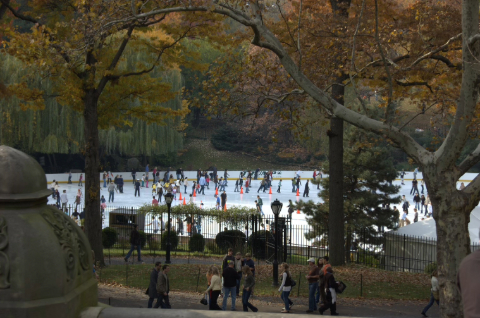
![]()
The Wollman Rink, located in the southern part of Central Park in New York City, is a popular seasonal ice skating venue that attracts both locals and tourists. Originally opened in 1950, this outdoor rink offers a picturesque setting with views of the city skyline and surrounding park landscape.
Wollman Rink has played a role in various movies and television shows, adding to its cultural significance. One notable film that featured scenes at the Wollman Rink is the romantic comedy "Serendipity" (2001), starring John Cusack and Kate Beckinsale. The rink's enchanting atmosphere and the allure of ice skating contribute to its appeal as a filming location.
Beyond its cinematic connections, the Wollman Rink is a beloved recreational spot, providing a delightful experience for skaters during the winter months. The combination of its scenic location, seasonal charm, and cinematic history makes the Wollman Rink a cherished and iconic destination within Central Park.
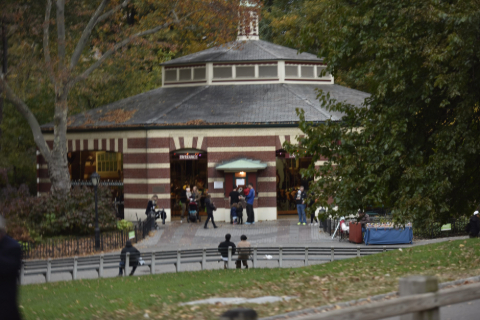
![]()
The Central Park Carousel is a beloved and timeless attraction nestled within the heart of Central Park, New York City. Erected in 1871, this enchanting merry-go-round holds the distinction of being one of the nation's oldest carousels. Located in the middle of the park at the entrance to the Central Park Zoo, the carousel captivates visitors with its nostalgic charm and whimsical allure.
Featuring an array of beautifully hand-carved horses, chariots, and other delightful figures, the Central Park Carousel transports riders to a bygone era. The meticulously crafted details and vibrant colors of the carousel's creatures add to its visual appeal, making it a favorite among both children and adults. The joyous melodies of the carousel's music further enhance the overall experience, creating a lively and festive atmosphere.
Over the years, the Central Park Carousel has become a cherished part of the park's cultural landscape, providing a delightful escape for generations of visitors. Its enduring popularity stems from the combination of its historic significance, artistic craftsmanship, and the simple joy it brings to those who partake in its timeless carousel ride.
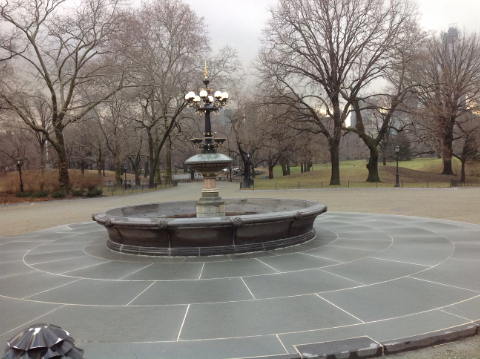
![]()
The Cherry Hill Fountain in Central Park is a captivating landmark situated on the picturesque Cherry Hill, offering both a scenic and functional element to the park's landscape. This classic Victorian-style fountain features ornate detailing and a central tiered structure surrounded by a circular basin. Nestled amid cherry trees and overlooking the lake, the fountain provides a serene setting for park visitors. Its design and location make it a popular spot for relaxation and contemplation. As water cascades from the fountain, it adds a soothing element to the surroundings, contributing to the overall charm of Cherry Hill and enhancing the parkgoers' experience in this tranquil corner of Central Park.
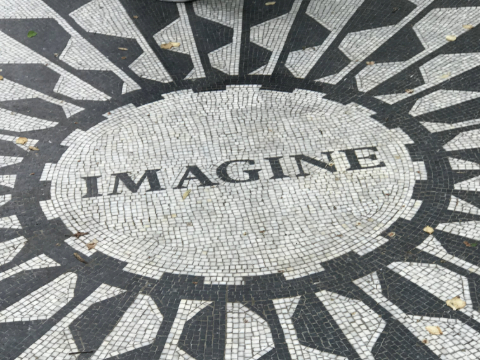
![]()
Strawberry Fields is a tranquil and reflective area located in Central Park, dedicated to the memory of John Lennon, the legendary musician and former member of The Beatles. Established in 1985, Strawberry Fields serves as a peaceful sanctuary for fans and visitors to pay homage to Lennon's life and legacy. The name is inspired by the Beatles' song "Strawberry Fields Forever."
At the heart of Strawberry Fields, there is the "Imagine" mosaic plaque, a prominent and iconic feature. The word "Imagine" is derived from Lennon's famous solo song, and the mosaic is adorned with flowers and symbols, offering a vibrant and artistic tribute. Visitors often gather around the mosaic, leaving flowers and tributes in remembrance of the influential musician.
Strawberry Fields and the "Imagine" plaque stand as a testament to the enduring impact of John Lennon's contributions to music and peace. The serene setting and the poignant tribute make this area a cherished destination for fans and those seeking a moment of reflection within the lush surroundings of Central Park.
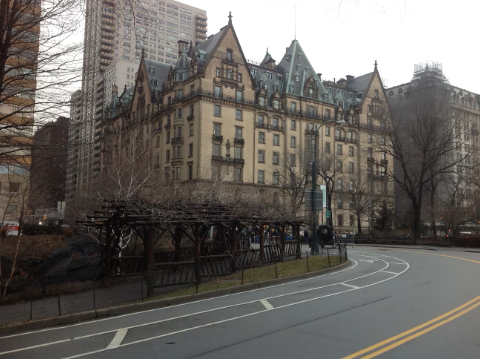
![]()
The Dakota Building, situated on the northwest corner of Central Park West and 72nd Street in Manhattan, is an iconic and historically significant residential structure. Constructed in the late 19th century, its distinctive German Gothic architecture and luxurious appeal have made it a symbol of opulence in New York City.
The Dakota gained additional renown through its association with notable residents, including renowned musicians John Lennon and Yoko Ono. Tragically, it became the site of Lennon's assassination in 1980, further cementing its place in cultural history.
Beyond its residential fame, The Dakota has served as a filming location for several movies. Notably, it provided the backdrop for Roman Polanski's psychological horror film "Rosemary's Baby" (1968), contributing to the eerie atmosphere of the story. The building's grandeur and architectural charm have made it a sought-after setting for filmmakers, adding to The Dakota's multifaceted cultural significance as both a residential landmark and a cinematic backdrop.
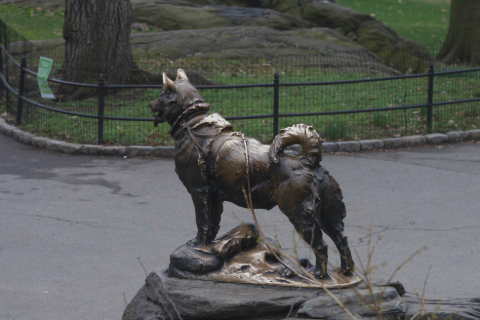
![]()
The Balto statue in Central Park commemorates the heroic deeds of a Siberian Husky named Balto and his team of sled dogs during the 1925 serum run to Nome, Alaska. Located near the Tisch Children's Zoo, the statue immortalizes Balto's pivotal role in delivering life-saving medicine to the remote town, which was battling a diphtheria outbreak. The bronze statue captures Balto's determined and triumphant stance, honoring not only the courage of the sled dog team but also celebrating the enduring bond between humans and their animal companions. The Balto statue stands as a poignant reminder of bravery and collaboration in the face of adversity, making it a cherished landmark in Central Park.

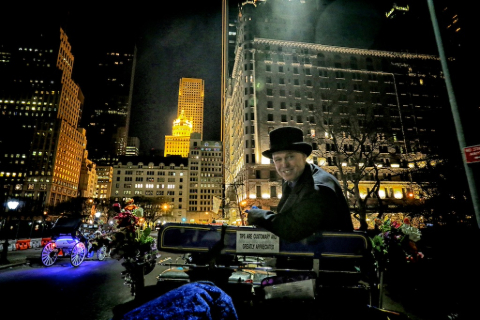





















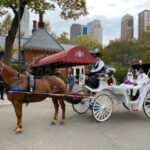
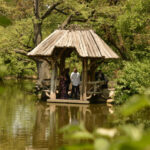
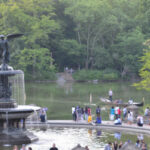
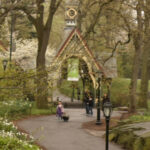
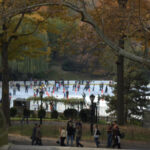
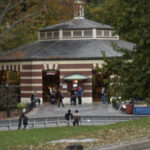
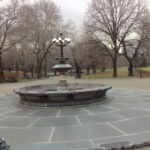
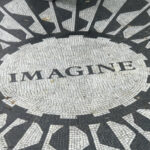

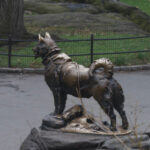

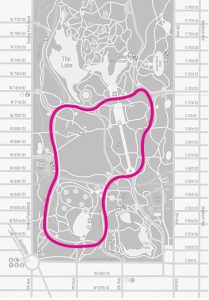 2.0 Mile / 3.2 Kilometer
2.0 Mile / 3.2 Kilometer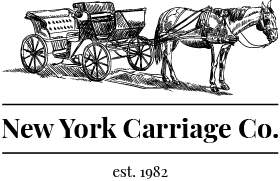

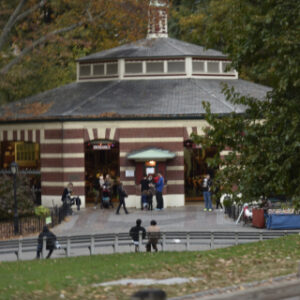
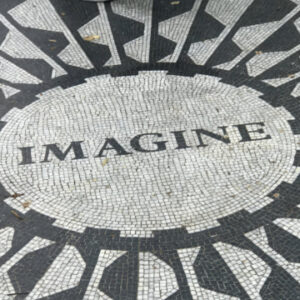

Reviews
There are no reviews yet.